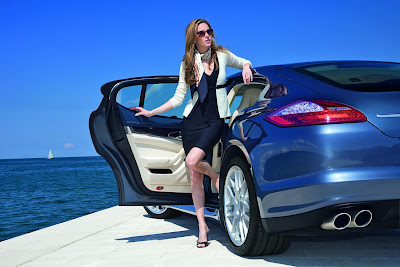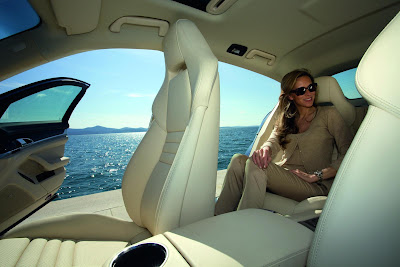 The eight-cylinder Panamera models are entering the next model year as of August 2010 with an even higher standard of all-round efficiency and new options. Particularly the new brake energy recuperation system featured as standard, together with optional 19-inch all-season tyres offering reduced roll resistance, give the Panamera Turbo a further improvement of fuel consumption by 0.9 litres/100 km. As a result, the 500-horsepower top model now consumes just 11.3 litres instead of formerly 12.2 litres/100 km in the New European Driving Cycle, equal to 25.0 mpg imp (formerly 23.2 mpg imp) and a reduction of CO2 emissions by 21 grams per kilometre. The Panamera S and Panamera 4S now making do with just 10.3 ltr/100 km and, respectively, 10.6 ltr/100 km (equal to 27.4 and, respectively, 26.7 mpg imp in the NEDC), are likewise up to half a litre more efficient per 100 kilometres (equal to minus 11 grams CO2/km).
The eight-cylinder Panamera models are entering the next model year as of August 2010 with an even higher standard of all-round efficiency and new options. Particularly the new brake energy recuperation system featured as standard, together with optional 19-inch all-season tyres offering reduced roll resistance, give the Panamera Turbo a further improvement of fuel consumption by 0.9 litres/100 km. As a result, the 500-horsepower top model now consumes just 11.3 litres instead of formerly 12.2 litres/100 km in the New European Driving Cycle, equal to 25.0 mpg imp (formerly 23.2 mpg imp) and a reduction of CO2 emissions by 21 grams per kilometre. The Panamera S and Panamera 4S now making do with just 10.3 ltr/100 km and, respectively, 10.6 ltr/100 km (equal to 27.4 and, respectively, 26.7 mpg imp in the NEDC), are likewise up to half a litre more efficient per 100 kilometres (equal to minus 11 grams CO2/km).







No comments:
Post a Comment